There’s no question that content is king. It’s your website’s lifeblood, and if you want to succeed online, you must consistently produce high-quality content. But what do you do if you feel your content efforts are falling flat? Or worse, what if you don’t even know where to start?
If that sounds like you, then a content audit may be just what the doctor ordered.
Content creation is essential for success, but many don’t realize how much goes into creating effective and engaging content. A successful content strategy requires more than just writing blog posts or articles. It also means understanding your target audience, creating an editorial calendar, and knowing which channels to use to reach your audience most effectively.
Cue in, a content audit.
A content audit is a comprehensive review of all the content on your website (or other channels) to assess its effectiveness and make improvements.
By conducting a content audit, you can get a clear picture of what’s working well and what needs to be improved. You can also identify any gaps in your content, which can help you create a more targeted content strategy going forward.
Not sure where to start? This guide will walk you through everything you need about content audits, from why you should do one to how to conduct your own.
Much Ado About Content
“Content” is anything published online. This includes text, images, videos, and infographics. And it’s not just limited to your website. Any time you publish something on social media, blog post comments, or even in an email newsletter, that’s content.
The key to success online is creating quality content that resonates with your target audience. That means publishing content that is interesting, informative, and engaging.
It’s not enough to simply publish content for the sake of it. Your goal should be to create content that helps you achieve your business objectives. That might mean generating leads, getting more website visitors, or increasing sales.
What is Content Audit, and Why Should You Care?
A content audit is a comprehensive review of all the content on your website. It is a thorough analysis of your website content, including both the written content (like blog posts and articles) and the non-written content (like images and videos).
Content audits are inventories of your website’s existing content.
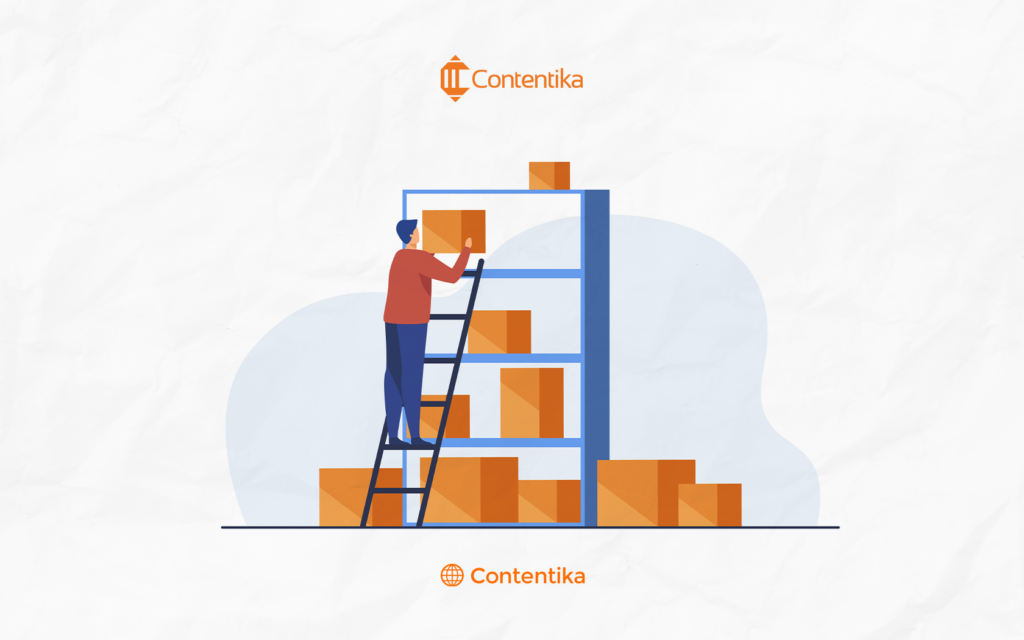
Once you have a complete list of all your website’s content, you can evaluate each piece individually.
Basically, a content audit helps you to identify which pieces of content are working well and which ones need to be improved. It also helps you to plan for future content to ensure that all your content is high-quality and engaging.
There are several reasons why you should conduct a content audit. Some common reasons include:
Improve Content Quality

An SEO content audit will assist you in determining which sections of your content require revision or improvement. This is essential since it ensures that your website’s content is high quality and engaging.
During the process of reviewing your website content, you will learn which posts are most popular with readers. This information can help you improve existing content and guide you in developing similar content in the future to attract even more visitors.
Also, you have the opportunity to address other issues, such as fixing any broken links, removing outdated content, and making other necessary improvements to content that is not performing well.
Understand Your Audience Better

A thorough content audit process will reveal valuable insights into your audience’s needs and preferences. It will help you understand the type of content your audience is most interested in.
By conducting a content audit, you will discover which content your audience is engaging with and why. The data from this analysis can be incorporated into future content planning to help you produce material that attracts a larger audience and generates more engagement.
Assess Content Marketing Strategy

An SEO content audit can be performed to evaluate the efficacy of your company’s existing content marketing strategy. By analyzing your content, you can determine what is effective and what is not.
Examining metrics like website traffic and conversion rates can give you an idea of how successful a blog post or other content on your website is. This will help you make changes to your strategy if necessary.
Additionally, it will assist you in determining the kinds of material you should publish in the future.
Identify Content That Can Be Repurposed

It is also a helpful way to find content that can be repurposed or reused in some way. For example, you may find that an old blog post can be updated with new information and republished. Or, you may discover that a piece of web copy can be repurposed as a social media post or email newsletter.
By taking the time to assess your website content carefully, you can ensure that everything works together to achieve your business goals.
Improve Search Engine Ranking

A content audit is vital in improving your website’s search engine ranking. By auditing your content, you can identify and fix areas that need improvement to help your site rank higher in search engine results pages (SERPs).
For example, if your website has a lot of duplicate content, you can fix this issue by rewriting or removing the duplicate content. Additionally, if your website lacks keyword-rich content, you can add new pages or blog posts targeting specific keywords.
Regularly auditing your website’s content ensures that your site is always optimized for search engine ranking.
Save Time And Money

You save time and money by doing a content audit. This is because while auditing your contents, you will discover ineffective content. Using this data, you can streamline your content production process and put your efforts where they will have the most significant impact.
Types of Content Audit
There are different kinds of content audits based on the goals of the audit and the way the audit is done.
Full Content Audit
A full content audit is a comprehensive review of all the content on your website. This includes looking at every piece of content, assessing its quality, and making recommendations for improvement.
Full content audits can be time-consuming and expensive, but they provide the most comprehensive assessment of your website’s content.
Partial Content Audit
A partial content audit is a less comprehensive review of your website’s content. This might involve looking at a specific type of content (such as blog posts or product descriptions) or assessing the effectiveness of a specific content marketing campaign.
Partial content audits are less expensive and time-consuming than full content audits, but they don’t provide as much information.
Quantitative Content Audit
A quantitative content audit is critical in determining the quality and performance of your website’s content. It focuses on taking an inventory of your website’s content.
To conduct a quantitative content audit, you simply need to make a list of all the content on your website and where it is located. This data lets you quickly decide which content to keep, clean up, and delete.
Qualitative Content Audit
To understand the strategic or brand value, you need to do a qualitative content audit to understand the strategic or brand value.
A qualitative content audit will give you insights into how your audience perceives your brand, what they think of your content, and how well your content aligns with your business goals.
This consumes a lot and effort, especially when it is done manually. However, it’s the only way to deeply understand your content strategy and evaluate your results.
Manual Content Audit
The first recommended option is to conduct a manual content audit. To run a successful content audit manually, you must go through your web pages yourself, list all the existing content, check for broken links, duplicate content and create a complete content audit checklist.
Afterward, you can evaluate each piece of content individually, deciding which content to keep, update, or delete. This is mostly done using Spreadsheet tools like Google sheets. It is a time-consuming process and is most suitable for small websites with limited content.
Pros
- You have complete control over the content audit process.
- You can tailor the content audit to your specific needs and goals.
- You don’t need to invest in any content audit tools.
Cons
- Manual content audits can be time-consuming.
- It can be challenging to assess all of your content objectively.
- You might overlook some content that needs to be updated or deleted.
Automated Content Audit
You can take advantage of automated content audit tools if you want to boycott the stress of conducting a manual content audit. This is done using content audit software programs.
Instead of following content audit templates, content audit tools like Google Analytics, Ahrefs and, DeepCrawl, can be used to get the job done.
These tools can help you automate the content audit process by crawling every of your web page and generating reports. This method is most suitable for larger websites with more content.
Pros
- Automated content audit saves you a lot of time.
- It can help you to assess a large amount of content quickly and objectively.
- Some content audit tools can also help you to update or delete content automatically.
Cons
- Content audit tools can be expensive.
- You might not have as much control over the content audit process when using a tool.
- Some content audit tools only work with certain types of content.
There are a few different ways to approach a content audit. The method that you choose will depend on factors such as the size of your website, the number of website pages, the amount of content on your site, and the resources that you have available.
Content Audit Tools
There are several software that can provide valuable insights into your website’s content performance. Some of them are:
Google Analytics

Google Analytics is the gold standard for tracking website traffic and engagement metrics. It is a free tool from Google that should be familiar to anyone who has conducted any web analysis. It helps SEO professionals with their content marketing efforts.
While Google Analytics doesn’t specifically focus on content auditing, it can still be extremely useful for identifying areas where your content quality could be improved.
For example, you can use Google Analytics to track pageviews, time on page, bounce rate, and other key metrics. Creating a Google Analytics account is simple, and anyone who can use Google search can use the service.
Ahrefs

Ahrefs is a comprehensive SEO toolkit that includes a content audit feature. This feature allows you to compare your site’s content against competitors’.
It lets you see which pages have the most organic traffic, identify your site’s most linked-to pages, most shared pages, and much more.
Ahrefs has a large database of URLs that you can use for comparison purposes. It has a 4-tier pricing structure named Lite, Standard, Advanced, and Enterprise. It cost $99/month, $199/month, $399/month and $999/month respectively.
Moz Pro

Moz Pro’s content audit feature allows you to view page-level analytics, including social shares, organic traffic, and referring domains.
It is an all-in-one SEO toolkit with many features that can help with search engine optimization and content auditing. Its user interface is easy to use, making it a good choice for beginners.
Additionally, its data can help compare your site’s content against competitors. Moz offers a 4-tier pricing structure: Standard, Medium, Large, and Premium. It cost $99/month, $179/month, 299/month and $599/month respectively.
SEMrush

SEMrush is a robust marketing toolkit. It content audit feature allows you to automatically perform an in-depth analysis of the subfolders of your website using the parameters of your choice.
With SEMrush, you can analyze your content in sets and group them according to four criteria; Rewrite or remove, Need to update, Quick review, and Poor content. You can also create custom sets.
Its user interface is relatively easy to use and has a large database of URLs you can use for comparison purposes. Additionally, its data can help understand your site’s content performance. SEMrush starts at $99.95/month.
Screaming Frog
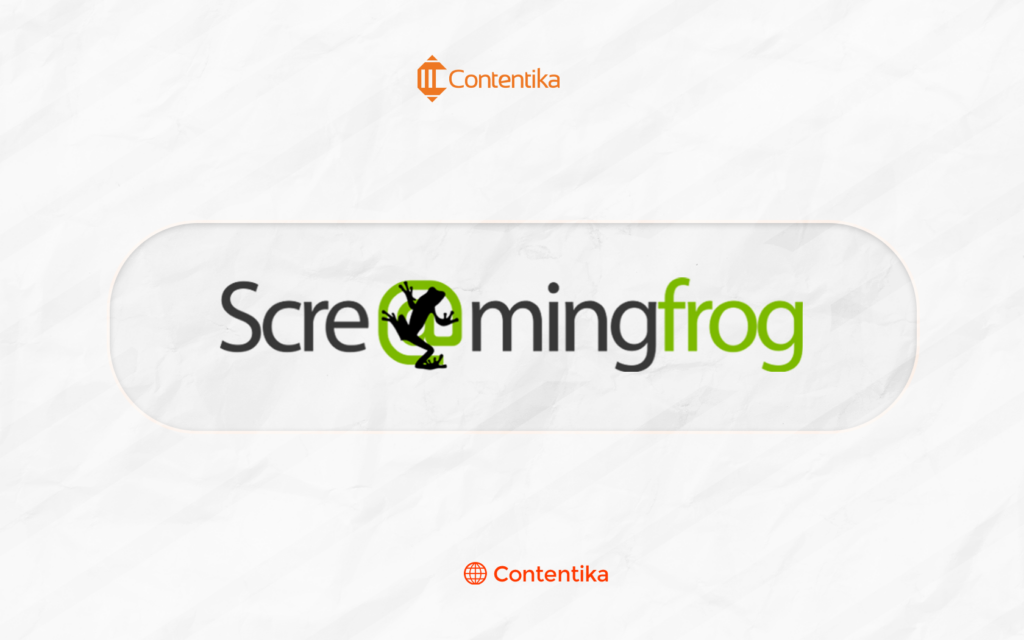
Screaming Frog is a desktop program that crawls websites and produces data on various parameters, including title tags, meta descriptions, headers, and more.
It is one of the most popular web crawlers on the market. It’s quick and easy to use and provides a wealth of data that can be extremely useful for conducting a content audit.
Screaming Frog has a free but limited version with a crawl limit of 500 URLs. However, its paid versions cost $209/year.
DeepCrawl

DeepCrawl is an essential tool for any website owner looking to improve their SEO. It is an excellent web crawler that offers a few features that Screaming Frog doesn’t.
For example, it includes an “audit this URL” feature that quickly assesses individual pages’ quality. It also offers support for JavaScript rendering, which can be helpful if your site uses AJAX or other advanced technologies. DeepCrawl starts at $149/month.
Google Search Console

Google Search Console is another free tool from Google, like Google Analytics, that helps you track your website’s performance in search results. Google Search Console is a must-use for any site owner serious about improving their SEO.
It provides detailed insights into your site’s appearance in search results, data on clicks, impressions, and other key metrics. Before you can use it, you must verify your site ownership, but it’s well worth it.
How to Conduct A Comprehensive Content Audit
One of the best ways to ensure that your website is functioning at its optimal level is to conduct a content audit. But what does that mean in practice? Let’s take a closer look.
Define Your Objectives
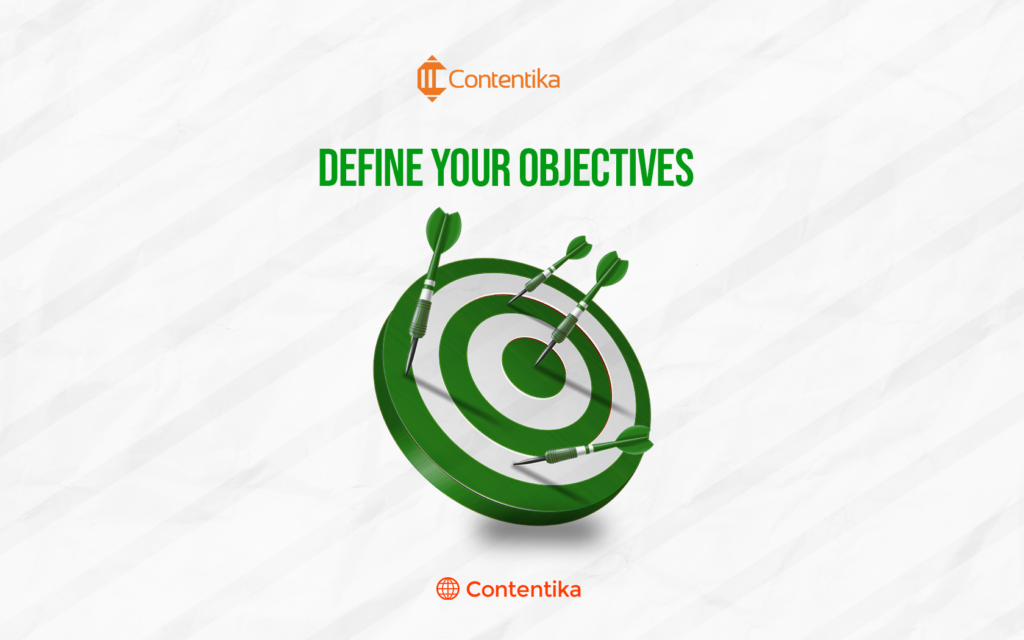
The process of auditing your website’s content can be a daunting and time-consuming task. However, defining your objectives beforehand is essential to ensure that the process is efficient and effective.
What exactly are you hoping to achieve through the audit? Are you looking to improve your search engine optimization, or are you trying to identify and eliminate outdated or irrelevant content?
Once you clearly understand your goals, you can begin to develop a plan to best achieve them. For example, if you’re interested in improving your SEO, you’ll need to pay close attention to both the quantity and quality of your content.
On the other hand, if you’re mainly concerned with getting rid of old material, you can focus on conducting a more general review of all your website’s content. In either case, taking the time to clearly define your objectives before beginning your content audit will pay off in the long run.
Set A Realistic Deadline

Because content audits can be extremely time-consuming, it is important to set a realistic deadline before beginning the process. Otherwise, you may find yourself feeling overwhelmed and frustrated.
When setting a deadline, be sure to allow enough time for a thorough review of all your content. Additionally, consider enlisting the help of others to speed up the process.
With careful planning and execution, a content audit can help to ensure that your website is always up-to-date and accurate.
Choose the Right Tool
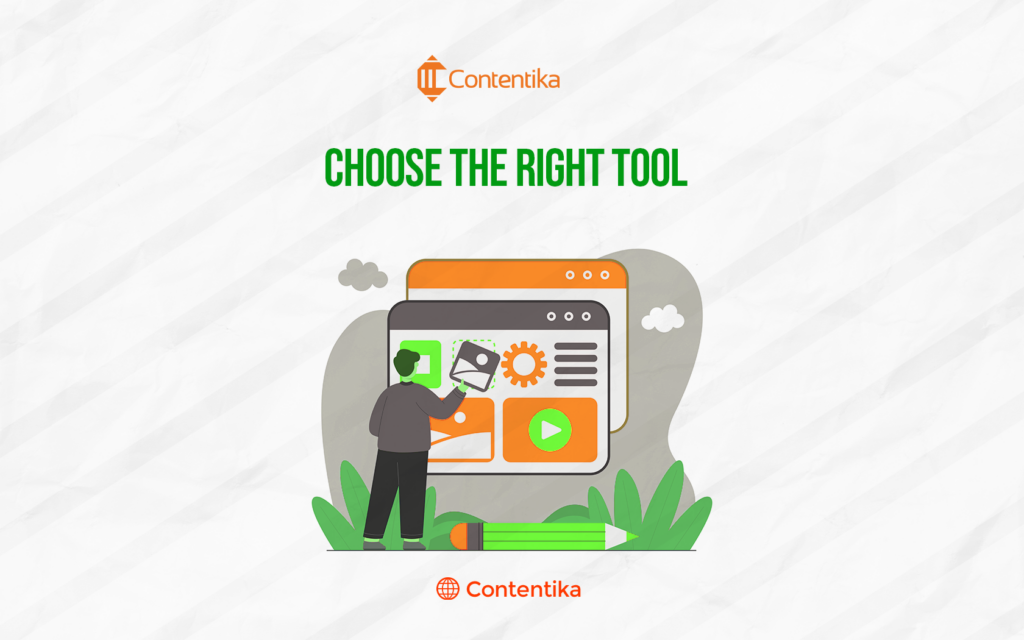
The next step in conducting a comprehensive content auditing of your website is choosing the right tool for the job. There are several different options available, and it’s important to select one that will fit your specific needs.
Google Analytics is a great place to start. This free tool can help you track your website’s traffic and see how users interact with your content. For more detailed information, you can use paid tools like Moz Pro, Ahrefs, Screaming Frog, or DeepCrawl.
Once you’ve selected a tool, the next step is configuring it properly. This includes setting up the crawler to ignore certain types of files, such as images or CSS files, and specifying which areas of the website you want to focus on.
Alternatively, if you have a small website, you can manually gather the URLs of the web pages you have decided to examine and record them in a spreadsheet. Categorize the content using a content audit template and analyze it piece by piece.
Analyze Your Data

Once you have collected data from your content audit, it’s time to analyze it. Begin by looking at your overall website traffic. Which pages are getting the most views? Which pages have the highest bounce rate?
If a piece of content has a high number of page views and a high bounce rate, that means people are coming to the page but not sticking around. This could indicate that the content is not relevant to their needs or is not well-written.
On the other hand, if a piece of content has a low number of page views and a low bounce rate, that means people are finding the content but not staying on the page for long. This could indicate that the content is not well-optimized for search engines or is not interesting enough to hold people’s attention.
Next, look at the conversion rate. This will give you an idea of how effectively your content achieves its goals. If a piece of content has a high conversion rate, it is doing a good job of converting visitors into leads or customers.
On the other hand, if a piece of content has a low conversion rate, it is not doing a good job converting visitors into leads or customers.
Once you know which pieces of content are performing well and which ones need improvement, you can start to make changes.
Make a Plan for Improvement

After conducting a content audit, you may find that some of your pages are outdated or no longer relevant. You may also discover that you have duplicate content or that your content is too thin.
Once you have evaluated all of the content on your website, you can start to make changes. Some changes may be as simple as adding new information or images to existing pages.
In other cases, you may need to delete entire pages or create new ones. If you don’t have the time or resources to make all the changes, prioritize the most important ones and work on those first.
When Is It Necessary To Conduct A Website Content Audit?
Ideally, you should conduct a comprehensive website content audit at least once a year. This will allow you to take a step back and evaluate your content from a bird’s eye view rather than getting bogged down in the day-to-day details.
Of course, depending on the size and complexity of your website, a yearly audit may not be realistic. In that case, aim for every two years. But if you’re constantly making changes to your website or adding new content, you may need to do it more often.
The key is to strike a balance between being too frequent (which can be time-consuming and expensive) and too infrequent (which can leave your blog post stale and out-of-date).
If you’re not sure how often you should conduct a website content audit, err on the side of caution and do it more often rather than less. You can constantly adjust your schedule as needed based on your findings.
However, there are a few times when a content audit might be very necessary:
During Website Redesign
If you’re planning a website redesign or launching a new website, a content audit is a great way to take stock of what you have and decide what needs to be kept, improved, or removed.
Content Audit makes it easy to assess your content strategy and identify web pages and content that is outdated, irrelevant, or just plain bad.
After A Major Change
Doing a content audit on your website pages is also a good idea if you’ve made a significant change to your business (like a rebrand). This will help ensure that all your content aligns with your new brand identity.
When You’re Not Getting Results
If you’re not seeing the results you want from your content (i.e., traffic, engagement, conversions, etc.), it might be time for a content audit. This will help you to identify any problems so that you can make changes accordingly.
Every Few Years
Even if everything is going well, conducting a content audit every few years is still a good idea. This will help you to keep your content fresh and relevant.
What To Look For During The Content Audit Process
When conducting a content audit, there are several different factors you should take into account. These factors will help you determine which part of your content strategy needs improvement.
Some of the things you should look out for during the content audit process include:
Check For Quality
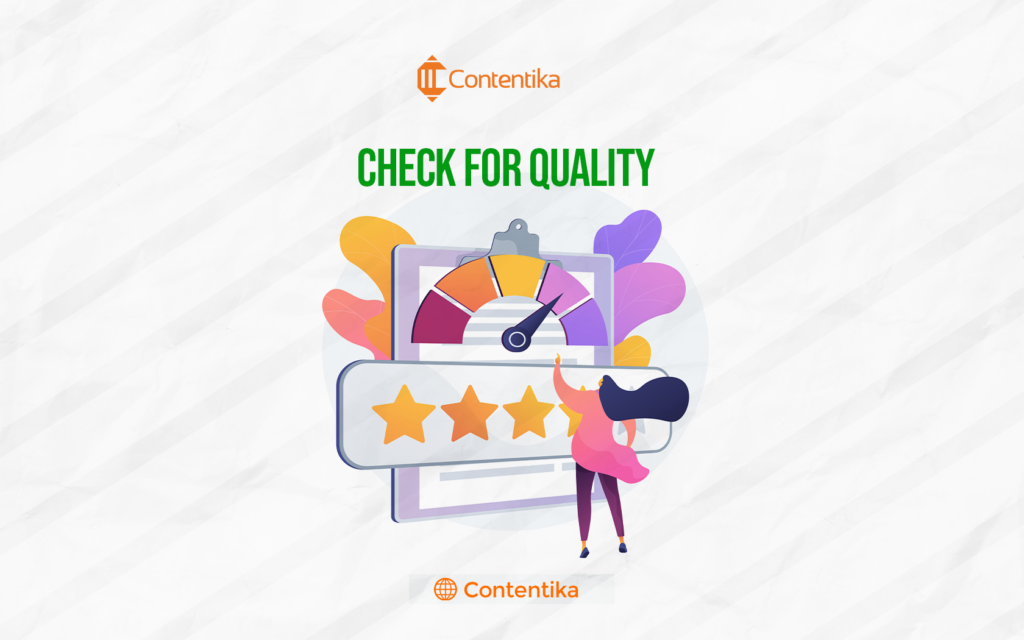
One of the first things you’ll want to do during your SEO audit checks is to check your content’s quality. This includes spelling and grammar mistakes, as well as whether the information in your articles is accurate and up-to-date.
Run spell check and a grammar check on all your content, and consider hiring a professional editor to go over everything with a fine-tooth comb.
Evaluate Readability

In addition to checking for quality, you’ll also want to evaluate the readability of your content. This includes things like sentence length, paragraph structure, and overall organization.
Ask yourself if your articles are easy to read and understand or are confusing and full of technical jargon. The goal is to ensure that your readers can easily digest the information in your articles.
Assess Tone And Approachability

Your tone and approachability are other important factors to consider during your audit. You’ll want to ensure that your tone is consistent throughout your content and that it aligns with your brand personality.
You’ll also want to ensure that your articles are written in an approachable way that’s easy for everyone to understand. Remember, you’re writing for a general audience, not just experts in your industry.
Determine Keyword Density
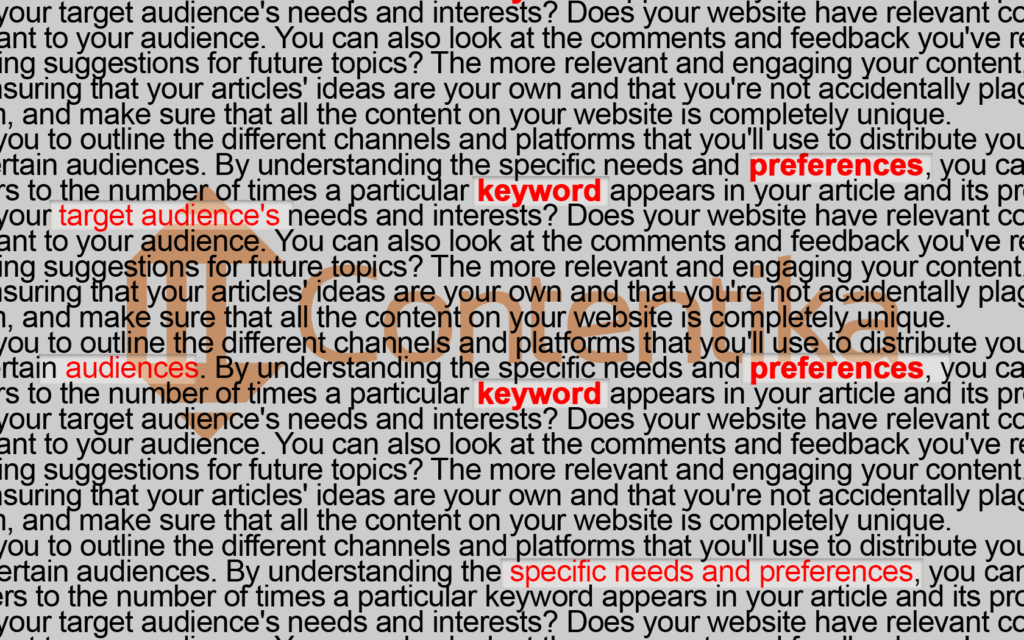
Keyword density is an important factor to consider when auditing your content. This refers to the number of times a particular keyword appears in your article and its proximity to other related keywords.
You’ll want to ensure that your articles have the right keywords to optimize for search engines but not too heavily reliant on them.
Check For Originality

Another important aspect of your SEO audit is checking for originality. This means ensuring that your articles’ ideas are your own and that you’re not accidentally plagiarizing someone else’s work.
Use a tool like Copyscape to check for plagiarism, and make sure that all the content on your website is completely unique.
Content Relevance

How well does your content align with your target audience’s needs and interests? Does your website have relevant content? One way to assess the relevance of your content is to look at how often it’s being shared on social media.
If your articles are being shared frequently, that’s a good sign that they’re relevant to your audience. You can also look at the comments and feedback you’ve received on your articles.
Do people seem to be engaged with what you’re writing about? Are they asking questions or leaving suggestions for future topics? The more relevant and engaging your content, the more likely people will keep reading it.
Analyze Traffic Data
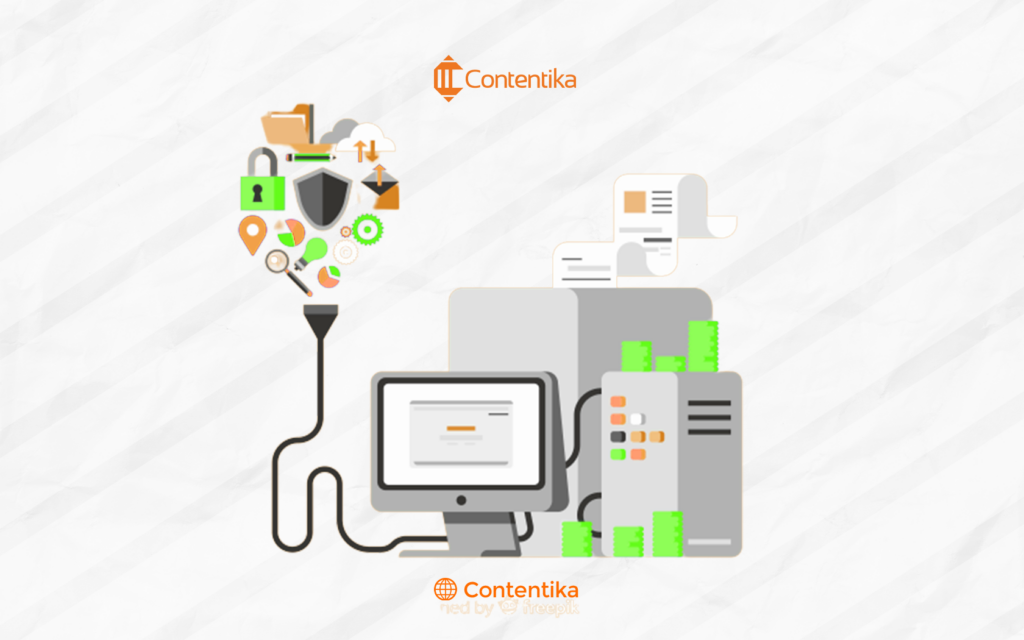
Finally, you’ll want to look at your website’s traffic data. This includes things like page views, unique visitors, and bounce rate.
Use a tool like Google Analytics to assess your traffic data and look for any patterns or trends you can identify. Doing so will help you understand which pieces of content are performing well and which need improvement.
By following these tips, you can conduct a thorough content audit that will help you to improve the quality of your website’s content. Remember to choose the right tools for the job and focus on quality and readability. With a little effort, you can ensure that your website’s content is up-to-par and ready to engage your readers.
Conclusion
Any website owner knows that a content audit is essential to website maintenance. Not only does it help to identify outdated or inaccurate information, but it also provides an opportunity to improve the overall quality of your site.
Making changes to your website’s content can be a lot of work, but it is worth it if it means your website will be more effective. Regardless of the changes you need to make, a content audit will give you a clear roadmap for improving your website.
If having a successful content marketing strategy that will make your competitors jealous is your goal, regular content audits can take you there. See you at the top of search engine results pages!
Contact Contentika today for professional content auditing of your website.













